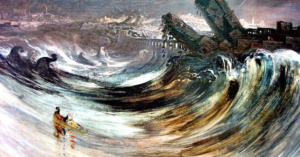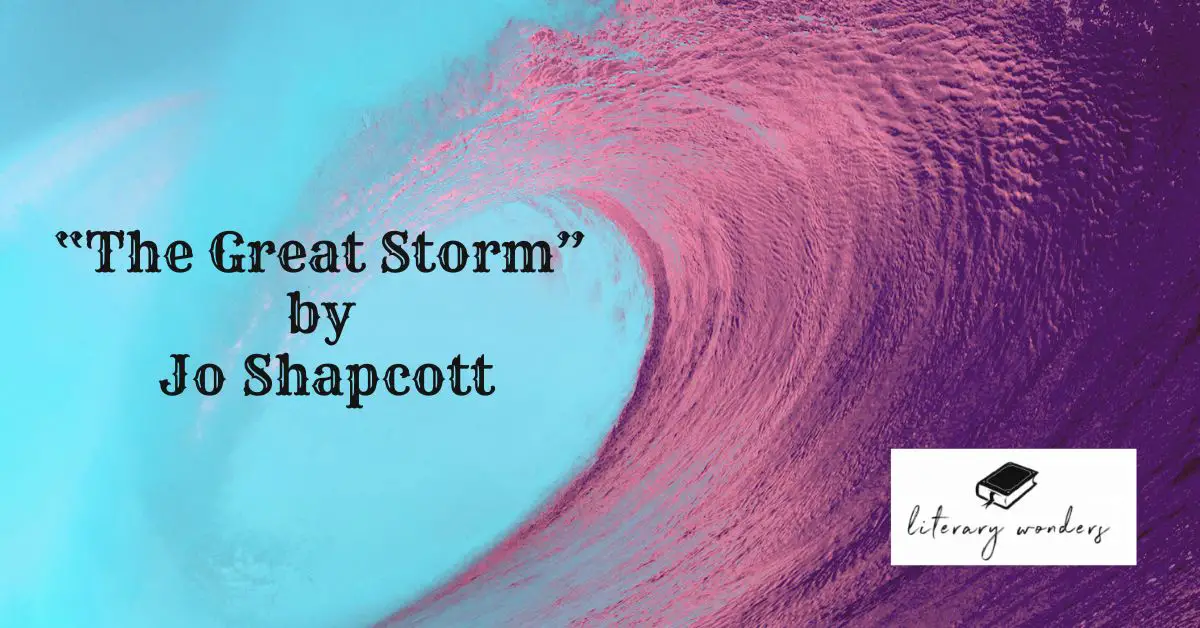“The Great Storm” by Jo Shapcott, a well-known English author, recollects some of the disturbing memories of the great storm of 1987. She begins the poem by describing the damage and chaos it created on her home and outside. Due to the mighty wind, everything becomes horizontal from the window. As a result, many people traveling via air, sea, and land transport lost their lives. It also brought noticeable changes to the natural world; it uprooted small trees, and fallen tree branches broke into the speaker’s house, changing comfort of her home into a nightmare.
However, to our surprise, the writer’s stance toward this deadly incident changes when she tries to connect the storm with her innermost desires. She presents a striking contrast between her loved one and the storm and claims that the storm is dearer to her. It reflects her violent desires that she wants to cling to the planet by her last fingernail. She desires to enter into the rush while singing and enjoying, forgetting the response of her beloved. She wants to live the most of her life before she disappears from the face of the earth.

“The Great Storm”, Themes
“The Great Storm” by Jo Shapcott exhibits various themes such as; violent nature, man versus wilderness, and crazy desires of man. This poem is primarily about the destruction the storm had caused on the earth. Using her poetic intellect, the writer tries to paint the picture of the great storm brought to the planet. She witnessed death, terror, and heart-wrenching cries everywhere.
If we look deeper into the text, the storm presents the crazy desires of the speaker, which she mentioned in the final stanza of the poem. It seems that she has been suppressing her wishes for a long time, and that suppression has made her go crazy. Therefore, she wants to show her wildness, craziness, and discontent to the end before she dies. Thus, the writer encodes a more profound message for the readers in this poem that no matter how long we try to make compromises in life, a time comes when we wish to live following our passions and crazy desires. This is what the speaker of the poem wants to do.
Poetic Elements in “The Great Storm” by Jo Shapcott
“The Great Storm” by Jo Shapcott displays a fair use of various poetic and literary elements such as; irony, rhyme scheme, diction, and symbolism. Jo has divided this poem into three free-verse stanzas that vary in length. She has also used various symbols to make her intended meanings clear to the audience, such as; the storm symbolizes her insane wishes, and destruction stands for the troubles she had endured in life.
Moreover, Jo has personified the storm throughout the poem as she writes, “The world roared.” The word roared creates a profound impact and hints about the catastrophic ruination the world witnessed in the hands of that storm. Another essential device Jo has used is a metaphor; she used the storm as an extended metaphor to relate it to her life. Unlike storm, she wants to be crazy, wild, and insane. Besides, the poem also exhibits situational irony when in the final stanza, the sad tone of the poem dramatically changes into something exciting.
Suggested Readings:

